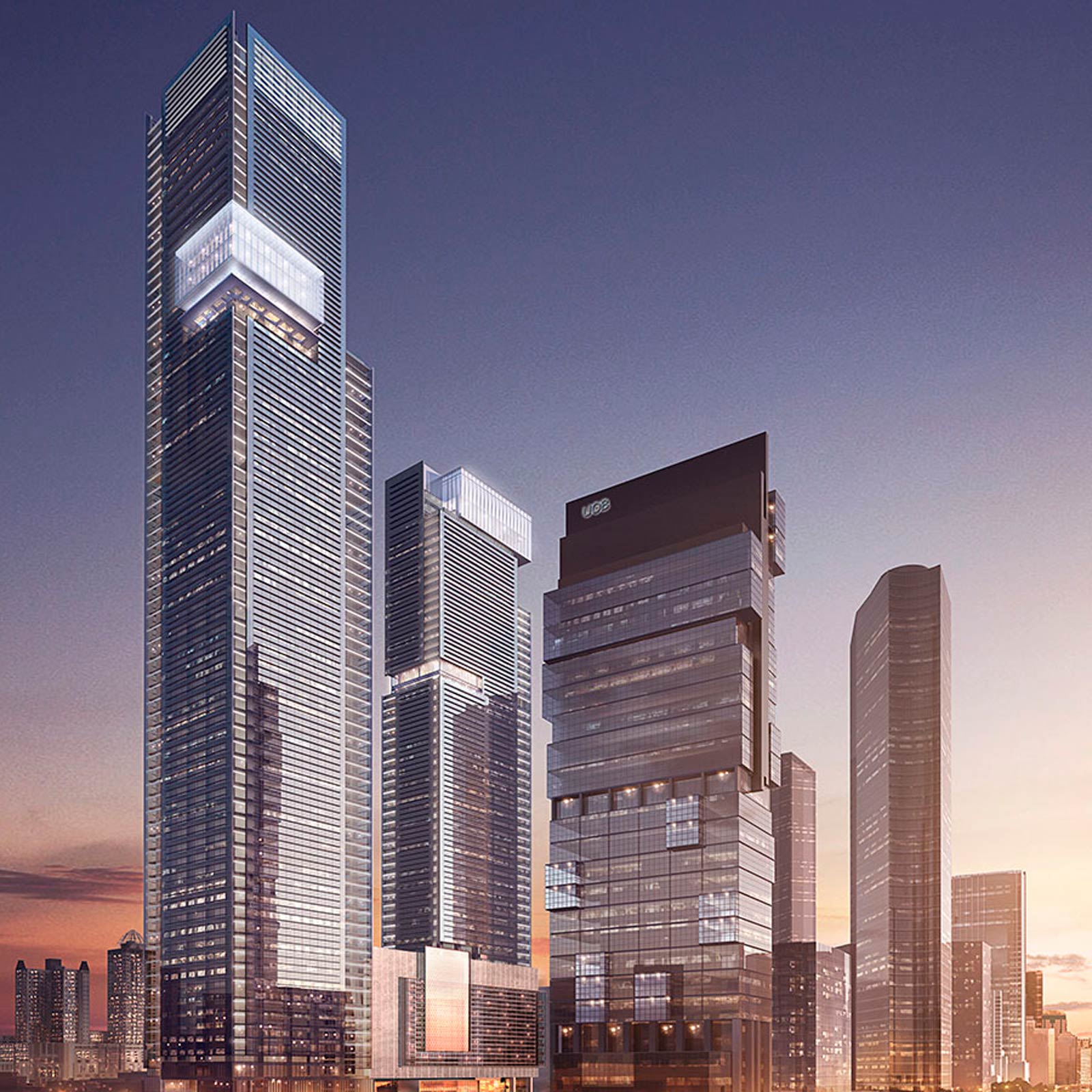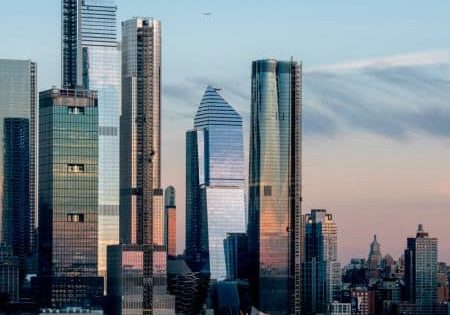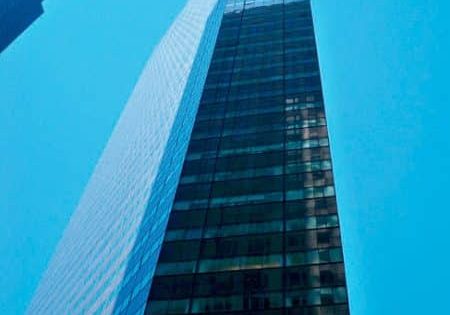CTBUH’s annual predictions for 2020 see big things ahead.
The Council on Tall Buildings and Urban Habitat (CTBUH) is the go-to source for information about tall buildings and building tall. For more than 50 years now, CTBUH has studied skyscrapers, along the way collecting every conceivable bit of information about these structures that, perhaps more than anything else, define modern urbanity. This legacy gives CTBUH a unique vantage from which to see the future of tall buildings, and each year it serves up its projections for the months ahead. It recently published its 2020 forecast.
We’re already more than three months into the new decade, and CTBUH started 2020 with a couple of notions drawn from Europe. For January, it was “Serendipity Engineering in the Sky,” the trend of designing workspaces that encourage interaction — a premium for today’s knowledge workers. This, CTBUH said, is exemplified by Trinity, an office tower outside Paris. February was momentous as the first month of the new Europe (following the January 31 Brexit deadline). Things got real for the multinational occupants of London’s high-rise office blocks, left to consider which is the better course of action: staying put or retreating to the Continent.
Marching Ahead
March’s scheduled opening of 30 Hudson Yards’ “The Edge” observation deck, which will give visitors commanding views of NYC and the surrounding area from an outdoor terrace 337 m (1,105 ft) above the street, will mark an acceleration of the race for super-high viewing platforms, the council said. With a partial glass floor, The Edge continues a trend that is certainly not for the faint of heart. And, CTBUH notes, the Big Apple has another deck on the way, with One Vanderbilt’s set to open in 2021.
CTBUH travels to China for its April prediction, in which it notes Shenyang’s 15-building Shengjing Finance Plaza project will hit a milestone when the final 12 buildings are finished. With all but one of them standing taller than 200 m, Shenyang is giving stiff competition to Shenzhen for the most-prolific skyscraper city with towers in that range.
For May, we see that the “aspirations of Central and South Asia to join the global ranks of skyline cities appear to be delivering in 2020.” To back up that statement, CTBUH points to the Abu Dhabi Plaza, a large mixed-use project in Nur-Sultan (Astana), Kazakhstan. The the 382-m-tall tower is set to become the tallest building in Kazakhstan and Central Asia. Meanwhile, the 276-m-tall Baku Tower In Baku, Azerbaijan, will become the country’s new tallest building, and Karachi, Pakistan, will welcome a new tallest building in the mixed-use Bahria Town ICON, a 273-m-tall skyscraper that has been under construction since 2008.
June, CTBUH said, will prove that 2020 is a big year for “mega-districts,” large, purpose-built districts within or just outside major cities. Says the council:
“The massive King Abdullah Financial District in Riyadh began construction in 2010 and has moved forward in fits and starts, with just 10 of its more-than-40 planned buildings completing by the end of 2019. But, for most of the project, it appears 2020 will be key. The centerpiece, PIF (formerly Capital Markets Authority) Tower is to finish off at 385 m, making it Saudi Arabia’s tallest building. Meanwhile, NEVA Towers, consisting of one 297-m mixed-use and one 345-m residential building, will finish in Moscow this year, rounding out the 60-ha Moscow-City development.”
“J” is for “July,” but it’s also for “Jakarta,” as the Indonesian capital is poised to finally go “supertall.” CTBUH notes the city has never had a 300-m-tall building, but that’s changing this year, as three new towers will surpass that height. Two of them are in the Indonesia-1 complex, and the third, Thamrin Nine Tower 1, will, at 334 m, be the city’s and country’s “height champion.”
Sky infinity pools have been exclusive to a select handful of super-luxury high rises, such as Marina Bay Sands in Singapore, but a trend toward offering these spectacular amenities will heat up in 2020. The council, for its August prediction, notes that Australia 108 in Melbourne will offer an infinity pool that “allows residents to swim up to double-height floor-to-ceiling windows at its midpoint.” Going one better, the Royal Atlantis in Dubai will have a rooftop pool and numerous private pools on balconies. Also in Dubai, the vision of Palm Tower’s developers includes a 360° infinity pool.
Urban gateways will be the thing for September, according to CTBUH:
“Skyline-watchers in 2020 can expect some extraordinary projects, which, by emphasizing the space bridged by their forms, as much as their ability to scrape the sky, are designed to open symbolic doors to their cities and, backers reckon, economic and cultural opportunities as well.”
Examples of such projects are Chicago’s Vista Tower, Melbourne’s Collins Arch, and Dubai’s Jumeirah Gate, all “expected to frame new perspectives on their cities for citizens and visitors alike.”
The prediction is a “smash success” for the CTBUH Conference, planned for October 19-23 in Singapore and Kuala Lumpur. The gathering will take place under the topic “Humanizing High Density: People, Nature & the Urban Realm,” and, while the prediction may sound a little self-serving, the council said a successful outcome will occur “only if we get great participation from our network” — a “call to action” for tall-building aficionados everywhere.
November’s trend, the council said, will be older tall buildings extending their heights and lifespans. Developers are increasingly asking, “why tear down when you can spruce up?” As examples, CTBUH cites New York’s 425 Park Avenue, where Foster + Partners is transforming a 118-m-tall, 1957 building into a 262-m-tall modern office tower this year. Others include the 1962 former headquarters of Pirelli, Torre Bonnet in Milan, which will become the slightly taller Corso Como Place, and the 1968 Space House in London, which will gain two stories in a makeover project that will extend beyond 2020.
This brings us to December, when, CTBUH says, more than 200 supertalls will be in existence. Though the council expected to see that landmark for buildings at least 300 m tall in 2019, there were, in fact, only 170 worldwide at year’s end. Confidence is high that the 200-supertall mark will be hit by the end of this year, which will be all the more remarkable, CTBUH said, if you consider that there were only 102 in 2015. For those keeping score, that’s a nearly 100% increase in only five years.
Get more of Elevator World. Sign up for our free e-newsletter.









